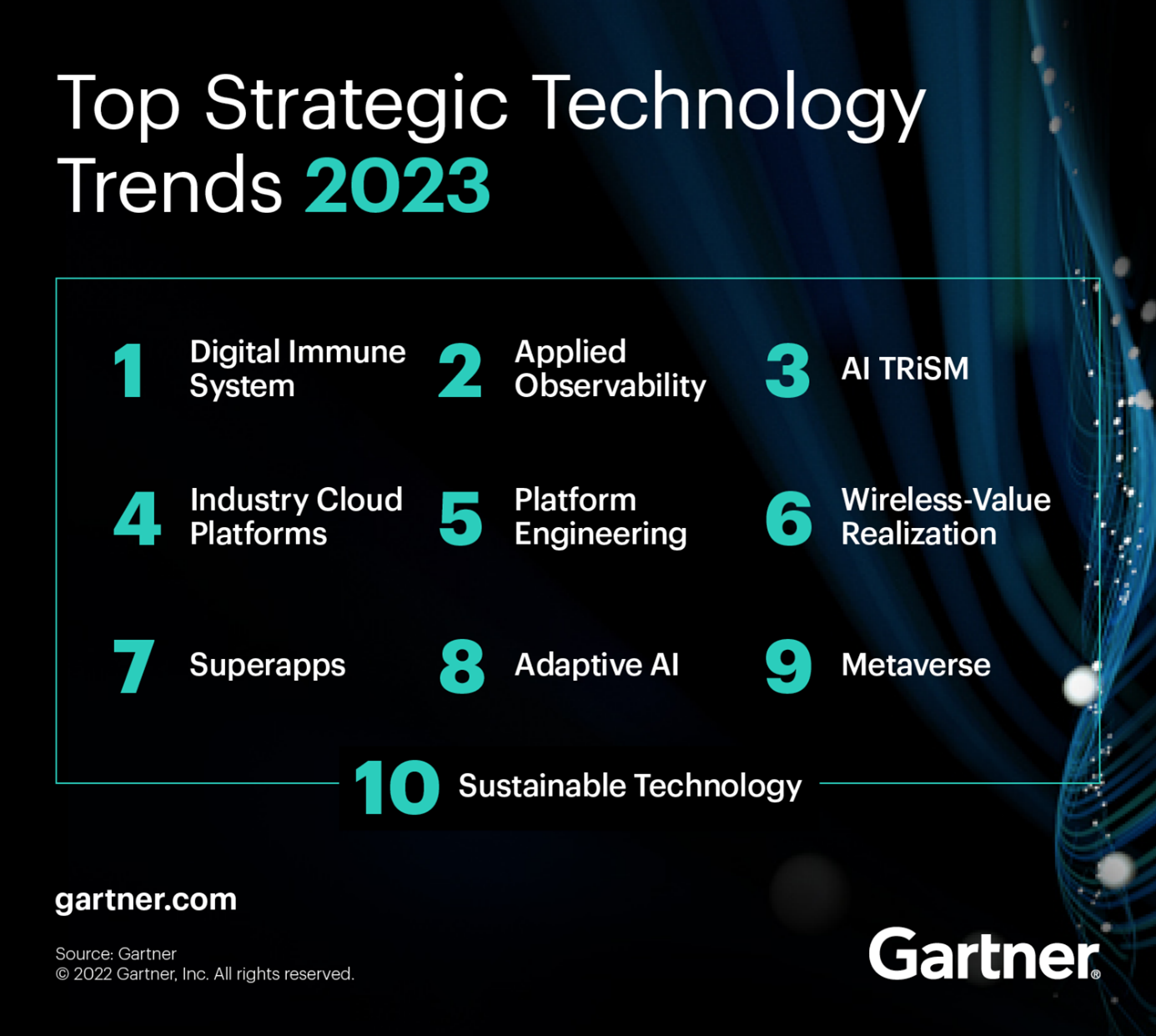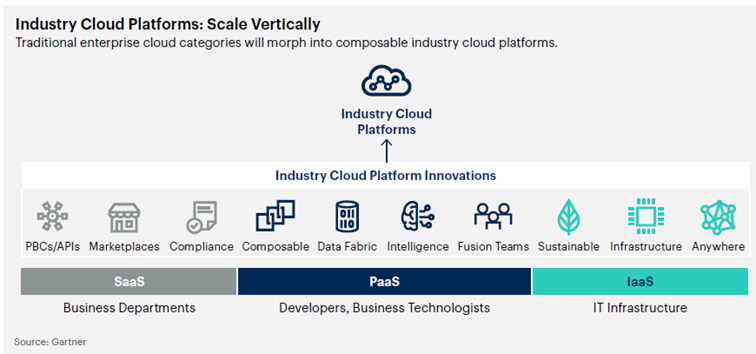More and more companies are turning to specialised industry cloud platforms in order to transcend and overcome the limitations of generic cloud solutions. As further proof and confirmation of this rising new trend, industry cloud platforms have also been included now, for the very first time, in Gartner’s annual selection of strategic technology trends.
Each year, Gartner publishes a list of top technology trends that it considers of strategic importance (see illustration below). Not surprisingly, these trends also come with a sense of urgency, requiring a response from the appropriate C-suite executives in the coming three years. However, as the research company also points out, “different trends will impact different organisations in different ways.” Therefore Gartner’s advice is to “first evaluate which of these trends present opportunities and risks to your organisation’s strategic direction. This will help you develop relevant roadmaps to enable reliable and sustainable business growth and outperform the competition.”

Key business priority: scale
As Gartner explains in an article on its website, the Top 10 Strategic Technology Trends for 2023 (as listed above) will enable organisations to address four key business priorities or ‘themes’. The second of these priorities consists in scaling productivity and customer value by advancing solutions, product delivery and connectivity. This scaling priority is supported by three strategic technology trends that, respectively, accelerate vertical offerings (‘Industry Cloud Platforms’), increase the pace of product delivery (‘Platform Engineering’), and enable connectivity everywhere (‘Wireless Value Realisation’).
As defined by Gartner, industry cloud platforms, also referred to as vertical cloud platforms, combine software, platform, and infrastructure as a service – SaaS, PaaS, and IaaS – with tailored, industry-specific functionality. Organisations can use that functionality to adapt more easily to the relentless stream of disruptions in their industry. As it happens, in most of today’s industries, business leaders who expected to be able to focus squarely on post-pandemic growth are now having to manage the impact of persistent inflation instead. Not to mention having to deal with ongoing crises in their supply chain, energy sourcing, and digital skills.
By incorporating cloud services traditionally purchased separately into pre-integrated industry-relevant solutions that still remain customisable or composable, industry clouds create business value for today’s struggling organisations. They do so by basically offering those organisations a number of packaged business capabilities (PBCs). These can be used as building blocks to help them compose unique and differentiating digital initiatives. As such, they allow today’s organisations to increase their agility, speed up their innovation process and reduce their time to market, all while avoiding lock-in. All these potential benefits lead Gartner to predict that by 2027, more than 50% of enterprises will be using industry cloud platforms to accelerate their digital business initiatives and grow their revenue.

Key actions for implementation
As usual, Gartner also offers up some key actions or best practices for implementing industry cloud platforms. To begin with, the research company advises against using such platforms as full-scale replacements of already existing functionality with more up-to-date technology. Instead, it recommends using those platforms to complement your existing portfolio with new capabilities that add significant value.
Closely linked to that first recommendation, Gartner also suggests that you formulate rules for when to deploy your new capabilities in order to improve and modernise existing processes, and when to actively recompose those same capabilities for transformation and innovation initiatives that have a more differentiating effect.
Last but not least, successful implementation requires that you engage your business technologists and your fusion teams to create an enterprise-wide understanding and support for your industry cloud journey. Or, if such teams don’t exist already, that you set them up.
Download Gartner’s detailed guide to the Top 10 Strategic Technology Trends for 2023for more advice and information on this and other new tech trends.
At Sopra Steria, we are dedicated to making the expected cloud benefits become a reality for our customers. Contact me or my Belux colleagues to find out more about our transformative Go-to-Cloud offer!